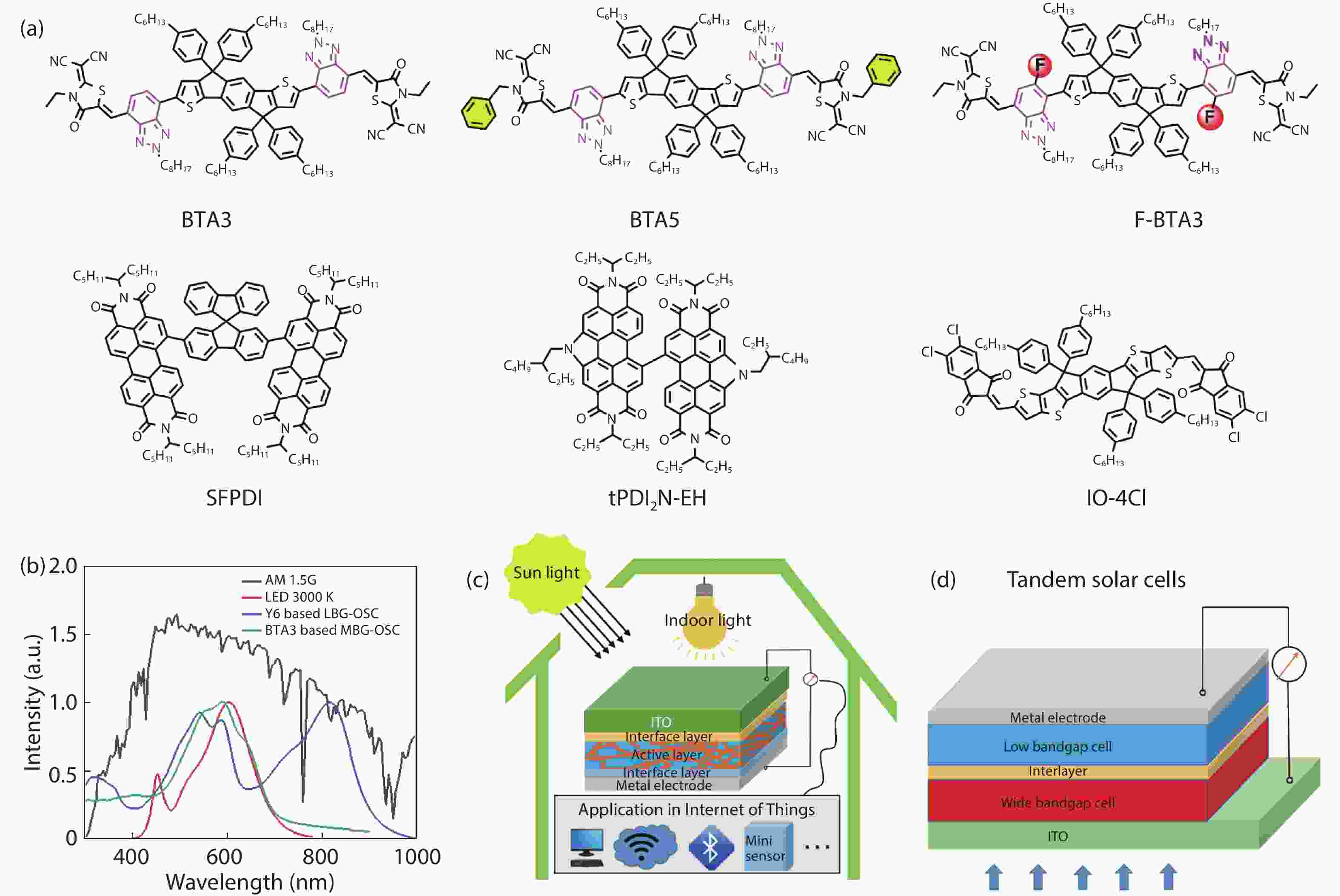| Citation: |
Ailing Tang, Zuo Xiao, Liming Ding, Erjun Zhou. ~1.2 V open-circuit voltage from organic solar cells[J]. Journal of Semiconductors, 2021, 42(7): 070202. doi: 10.1088/1674-4926/42/7/070202
A L Tang, Z Xiao, L M Ding, E J Zhou, ~1.2 V open-circuit voltage from organic solar cells[J]. J. Semicond., 2021, 42(7): 070202. doi: 10.1088/1674-4926/42/7/070202.
Export: BibTex EndNote
|
~1.2 V open-circuit voltage from organic solar cells
doi: 10.1088/1674-4926/42/7/070202
More Information-
References
[1] Liu Q, Jiang Y, Jin K, et al. 18% efficiency organic solar cells. Sci Bull, 2020, 65, 272 doi: 10.1016/j.scib.2020.01.001[2] Jin K, Xiao Z, Ding L. D18, an eximious solar polymer!. J Semicond, 2021, 42, 010502 doi: 10.1088/1674-4926/42/1/010502[3] Qin J, Zhang L, Zuo C, et al. A chlorinated copolymer donor demonstrates a 18.13% power conversion efficiency. J Semicond, 2021, 42, 010501 doi: 10.1088/1674-4926/42/1/010501[4] Jin K, Xiao Z, Ding L. 18.69% PCE from organic solar cells. J Semicond, 2021, 42, 060502 doi: 10.1088/1674-4926/42/6/060502[5] Zhang M, Zhu L, Zhou G, et al. Single-layered organic photovoltaics with double cascading charge transport pathways: 18% efficiencies. Nat Commun, 2021, 12, 309 doi: 10.1038/s41467-020-20580-8[6] Cui Y, Wang Y, Bergqvist J, et al. Wide-gap non-fullerene acceptor enabling high-performance organic photovoltaic cells for indoor applications. Nat Energy, 2019, 4, 768 doi: 10.1038/s41560-019-0448-5[7] Bai Y, Yu R, Bai Y, et al. Ternary blend strategy in benzotriazole-based organic photovoltaics for indoor application. Green Energy Environ, 2021, in press doi: 10.1016/j.gee.2020.07.017[8] Reich N H, van Sark W G J H M, Alsema E A, et al. Crystalline silicon cell performance at low light intensities. Sol Energy Mater Sol Cells, 2009, 93, 1471 doi: 10.1016/j.solmat.2009.03.018[9] Ameri T, Li N, Brabec C J. Highly efficient organic tandem solar cells: A follow up review. Energy Environ Sci, 2013, 6, 2390 doi: 10.1039/c3ee40388b[10] Elumalai N K, Uddin A. Open circuit voltage of organic solar cells: An in-depth review. Energy Environ Sci, 2016, 9, 391 doi: 10.1039/C5EE02871J[11] Vandewal K, Tvingstedt K, Gadisa A, et al. On the origin of the open-circuit voltage of polymer-fullerene solar cells. Nat Mater, 2009, 8, 904 doi: 10.1038/nmat2548[12] Tang A, Xiao B, Wang Y, et al. Simultaneously achieved high open-circuit voltage and efficient charge generation by fine-tuning charge-transfer driving force in nonfullerene polymer solar cells. Adv Funct Mater, 2018, 28, 1704507 doi: 10.1002/adfm.201704507[13] Xiao B, Geng Y, Tang A, et al. Controlling the cyano-containing A2 segments in A2-A1-D-A1-A2 type non-fullerene acceptors to combine with a benzotriazole-based p-type polymer: “Same-acceptor-strategy” for high Voc organic solar cells. Solar RRL, 2019, 3, 1800332 doi: 10.1002/solr.201800332[14] Tang A, Song W, Xiao B, et al. Benzotriazole-based acceptor and donors, coupled with chlorination, achieve a high Voc of 1.24 V and an efficiency of 10.5% in fullerene-free organic solar cells. Chem Mater, 2019, 31, 3941 doi: 10.1021/acs.chemmater.8b05316[15] Wang X, Tang A, Yang J, et al. Tuning the intermolecular interaction of A2-A1-D-A1-A2 type non-fullerene acceptors by substituent engineering for organic solar cells with ultrahigh Voc of ~1.2 V. Sci China Chem, 2020, 63, 1666 doi: 10.1007/s11426-020-9840-x[16] Chen Y, Jiang X, Chen X, et al. Modulation of three p-type polymers containing a fluorinated-thiophene-fused-benzotriazole unit to pair with a benzotriazole-based non-fullerene acceptor for high Voc organic solar cells. Macromolecules, 2019, 52, 8625 doi: 10.1021/acs.macromol.9b01569[17] An N, Cai Y, Wu H, et al. Solution-processed organic solar cells with high open-circuit voltage of 1.3 V and low non-radiative voltage loss of 0.16 V. Adv Mater, 2020, 32, 2002122 doi: 10.1002/adma.202002122[18] Nie Q, Tang A, Cong P, et al. Wide band gap photovoltaic polymer based on pyrrolo[3,4-f]benzotriazole-5,7-dione (TzBI) with ultrahigh Voc beyond 1.25 V. J Phys Chem C, 2020, 124, 19492 doi: 10.1021/acs.jpcc.0c05914[19] Liu X, Du X, Wang J, et al. Efficient organic solar cells with extremely high open-circuit voltages and low voltage losses by suppressing nonradiative recombination losses. Adv Energy Mater, 2018, 8, 1801699 doi: 10.1002/aenm.201801699[20] Tintori F, Laventure A, Koenig J D B, et al. High open-circuit voltage roll-to-roll compatible processed organic photovoltaics. J Mater Chem C, 2020, 8, 13430 doi: 10.1039/D0TC03614E[21] Nakano K, Chen Y, Xiao B, et al. Anatomy of the energetic driving force for charge generation in organic solar cells. Nat Commun, 2019, 10, 2520 doi: 10.1038/s41467-019-10434-3[22] Mathews I, Kantareddy S N, Buonassisi T, et al. Technology and market perspective for indoor photovoltaic cells. Joule, 2019, 3, 1415 doi: 10.1016/j.joule.2019.03.026 -
Proportional views






 DownLoad:
DownLoad:














